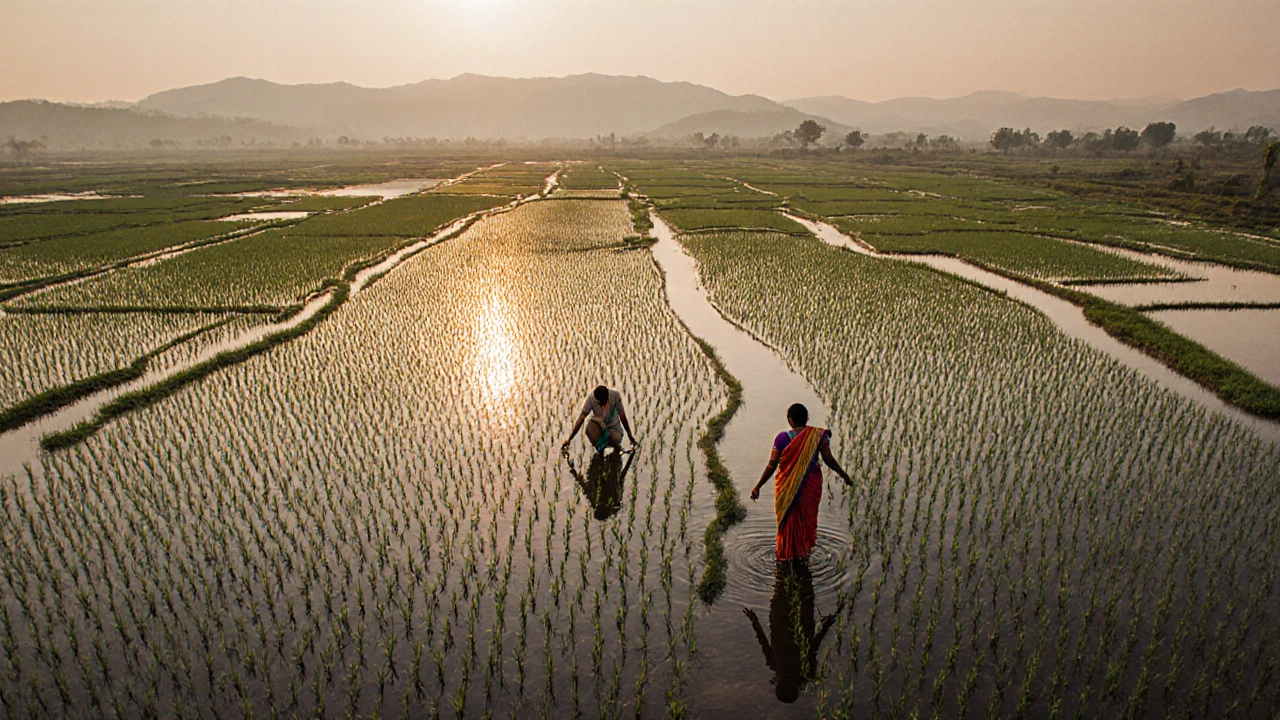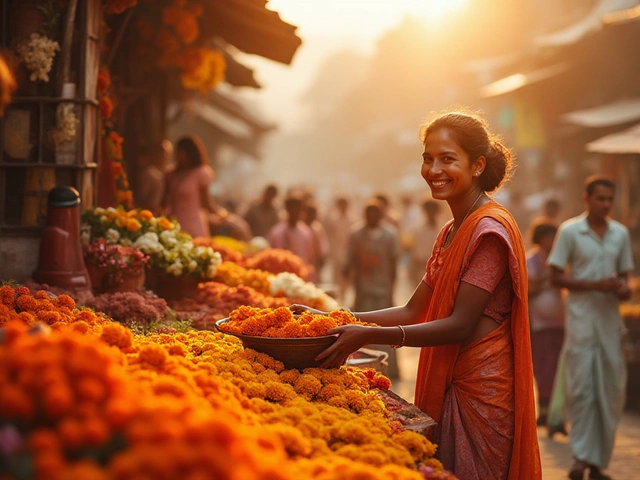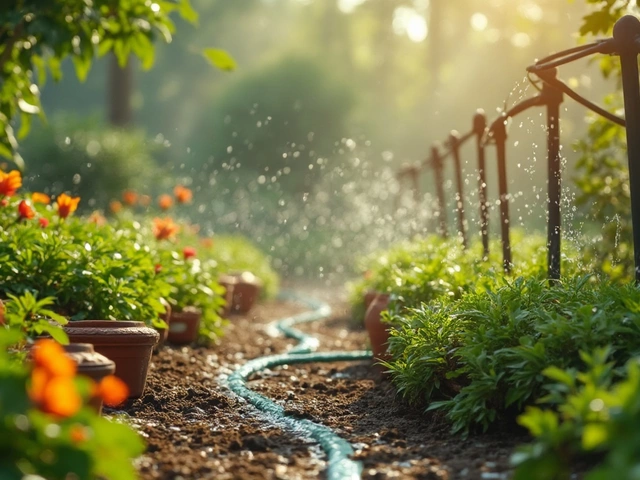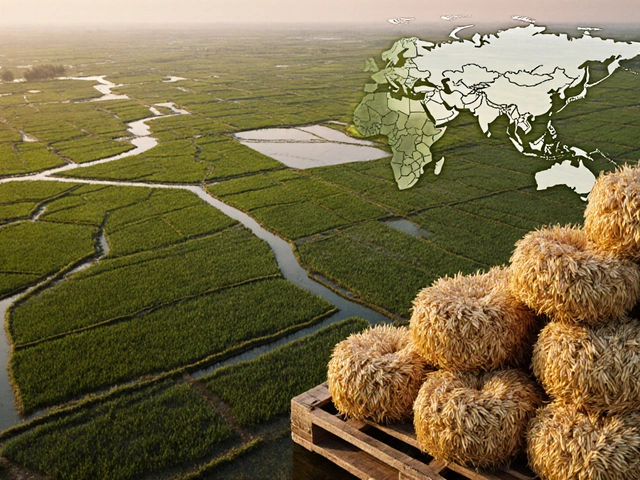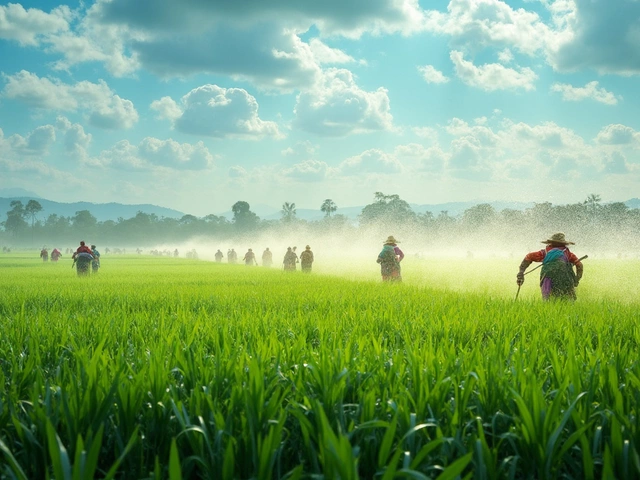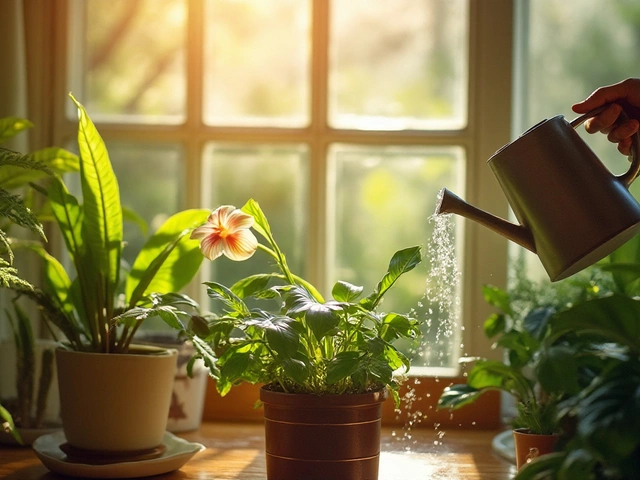Rice Land Calculator
How Much Land for Your Rice?
Results
Note: The calculator uses data from the article. Actual requirements may vary based on climate, water access, and farming practices.
One person eats about 100 to 150 pounds of rice every year, depending on where they live and what they eat. That might not sound like much, but growing enough rice to feed just one person for a whole year takes land-real, fertile, water-heavy land. So how many acres does it actually take?
Rice Isn’t Grown Like Lettuce
Rice doesn’t grow in dry soil like carrots or tomatoes. It needs flooded fields, called paddies, where water sits 4 to 6 inches deep for weeks. That means you can’t just plant it anywhere. You need flat land, good water access, and a climate that stays warm for at least 120 days. In places like Thailand, Vietnam, or Bangladesh, farmers grow rice year-round. In the U.S., it’s mostly in Arkansas, California, and Louisiana.
The average yield for a rice field is about 6 to 7 tons per hectare. That’s roughly 2.5 to 3 tons per acre. But that’s the raw, unprocessed grain. After milling-removing the husk, bran, and germ-you’re left with about 65% edible white rice. So from one acre, you get around 1.6 to 2 tons of milled rice.
Feeding One Person: The Math
Let’s break it down. The average person consumes 130 pounds of rice per year. That’s about 59 kilograms. One ton of milled rice equals 2,205 pounds. So if one acre gives you 1.8 tons of milled rice, that’s 3,970 pounds.
Divide that by 130 pounds per person: 3,970 ÷ 130 = 30.5. So one acre of rice can feed about 30 people for a full year.
That means to feed one person, you need roughly 0.033 acres of rice land. Or, in simpler terms, about 1,450 square feet. That’s a little bigger than a standard tennis court’s singles area, but spread out over a whole year’s harvest.
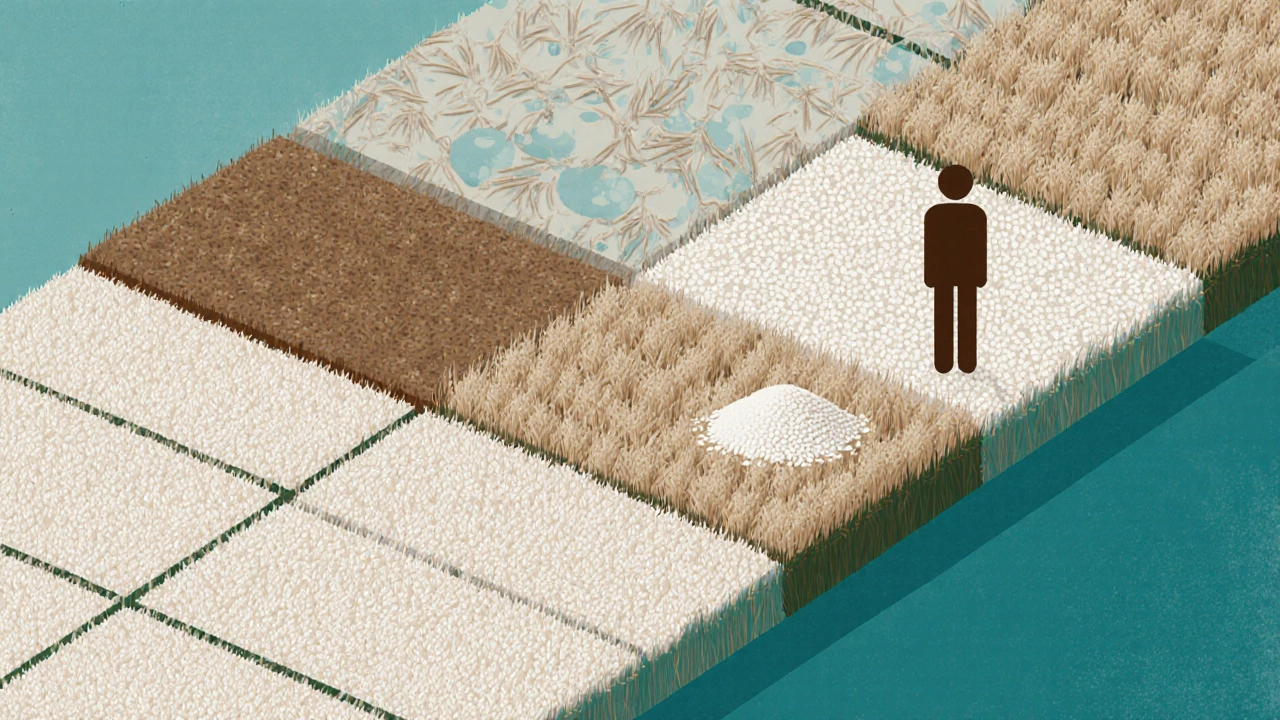
But It’s Not That Simple
That 0.033-acre number looks clean, but it ignores a lot of real-world factors. Rice yields vary wildly. In small farms in India or Cambodia, yields can drop to 2 tons per hectare-or even less. In those cases, you’d need nearly double the land to feed one person. On the flip side, high-tech farms in California using precision irrigation and hybrid seeds can hit 8 tons per hectare. That could cut the land needed to under 0.025 acres per person.
Weather matters too. A drought in Thailand or a flood in Bangladesh can wipe out entire harvests. Climate change is making this worse. Rising sea levels are salting coastal paddies in Vietnam, where half the country’s rice is grown. That means even if you have the land today, it might not be usable tomorrow.
And then there’s water. Growing one kilogram of rice takes about 2,500 liters of water. That’s more than 600 gallons. For one person’s yearly rice, you’re using around 150,000 liters-enough to fill a small swimming pool. In places like California, where water is scarce, that’s a huge trade-off.
What About Other Crops?
Comparing rice to other staples shows how land-intensive it is. One acre of wheat can feed about 50 people a year. One acre of potatoes? Up to 100 people. Even corn, which is often used for animal feed, can feed 40 people if turned into human-edible products like cornmeal or tortillas.
Rice is the most important staple for over half the world’s population, but it’s not the most efficient. That’s why countries like Bangladesh and Indonesia are investing in drought-resistant rice strains and better water management. Some farmers are switching to System of Rice Intensification (SRI), a method that cuts water use by 30% and increases yields by 20-50% by planting younger seedlings farther apart and keeping soil moist instead of flooded.
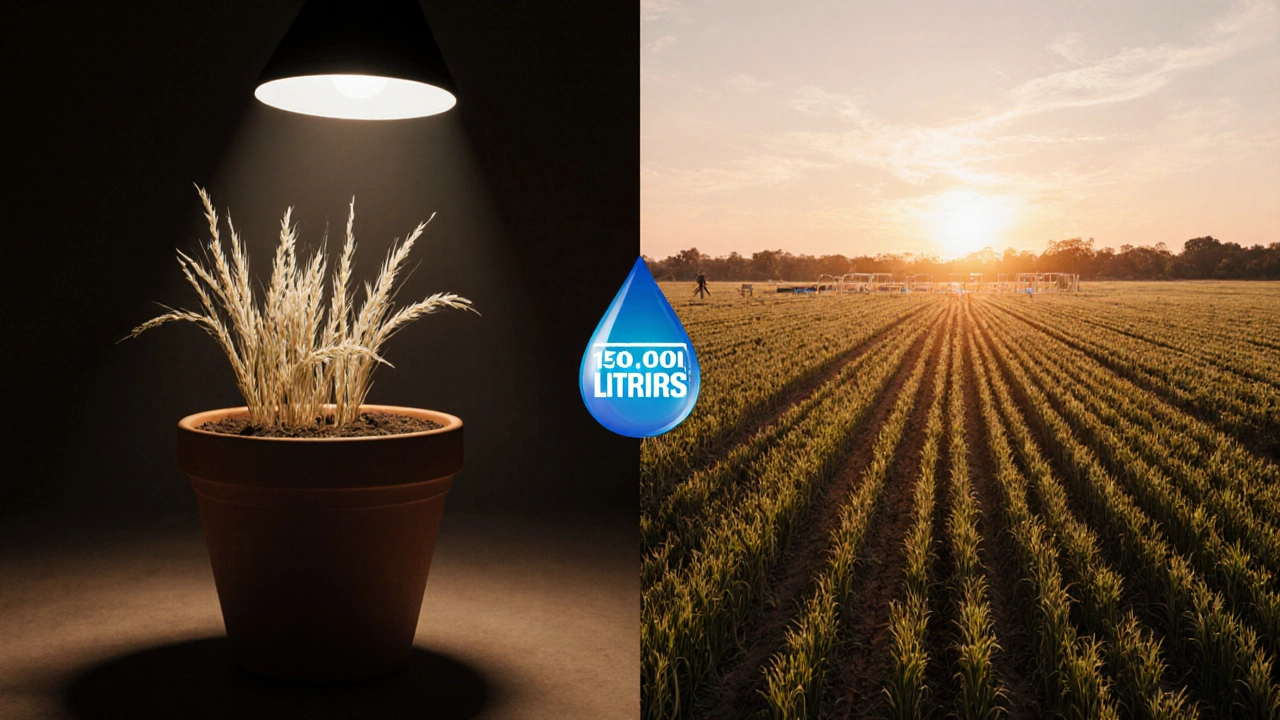
Can We Do Better?
Yes. And we already are. In the U.S., rice farmers are using laser-leveling to make fields perfectly flat, so water doesn’t pool or drain unevenly. In Australia, they’ve cut water use by 60% over the last 20 years by recycling runoff and using drip irrigation systems designed for rice.
But the biggest gains aren’t just in technology. They’re in diet. In many Asian countries, rice is still the main source of calories. In the U.S. and Europe, it’s a side dish. If people ate less rice and more diverse grains-like quinoa, barley, or millet-we could reduce pressure on rice lands. That doesn’t mean giving up rice. It means balancing it.
What Does This Mean for You?
If you’re growing rice at home-even in a big container-you’re not going to feed yourself. A single pot might give you a cup or two of cooked rice. You’d need hundreds of pots to match one person’s yearly needs. That’s why rice farming is a large-scale, resource-heavy operation.
But if you care about food systems, water use, or climate change, knowing how much land it takes to feed one person helps you understand the cost of your plate. Choosing brown rice over white? That doesn’t change the land use-it just changes the nutrition. Supporting farmers who use less water and fewer chemicals? That does matter.
Every pound of rice you eat comes from about 0.033 acres of land, 150,000 liters of water, and months of hard work. That’s worth remembering the next time you serve a bowl of rice.
How many pounds of rice does one person eat in a year?
On average, a person consumes between 100 and 150 pounds of rice per year. In countries where rice is a dietary staple-like Bangladesh, Cambodia, or Laos-consumption can be closer to 200 pounds. In Western countries, it’s often under 10 pounds per person.
Can you grow enough rice in your backyard to feed yourself?
No. Even the most efficient home growers can’t produce more than a few pounds of rice per season. To feed one person for a year, you’d need about 0.033 acres-roughly 1,450 square feet of flooded land. That’s not practical in a backyard, especially in cooler climates. Rice needs constant warm temperatures and standing water for months.
Which countries produce the most rice per acre?
China, India, and the United States are the top producers by total volume, but yield per acre is highest in countries like Australia and the U.S. state of Arkansas. Australian rice farms average over 9 tons per hectare (about 3.6 tons per acre), thanks to advanced irrigation and hybrid seeds. In contrast, smallholder farms in sub-Saharan Africa often yield less than 2 tons per hectare.
Does brown rice require more land to grow than white rice?
No. Brown and white rice come from the same plant and the same field. The difference is in processing. Brown rice keeps the bran and germ, while white rice has them removed. The land, water, and labor needed to grow the grain are identical. Only the milling step changes.
Is rice farming bad for the environment?
It can be. Flooded rice paddies release methane, a potent greenhouse gas. Water use is high-about 2,500 liters per kilogram of rice. Runoff from fertilizers and pesticides can pollute rivers. But modern techniques like SRI, alternate wetting and drying, and organic farming are reducing these impacts. In some places, rice fields now support fish and birds, turning them into ecological zones.
